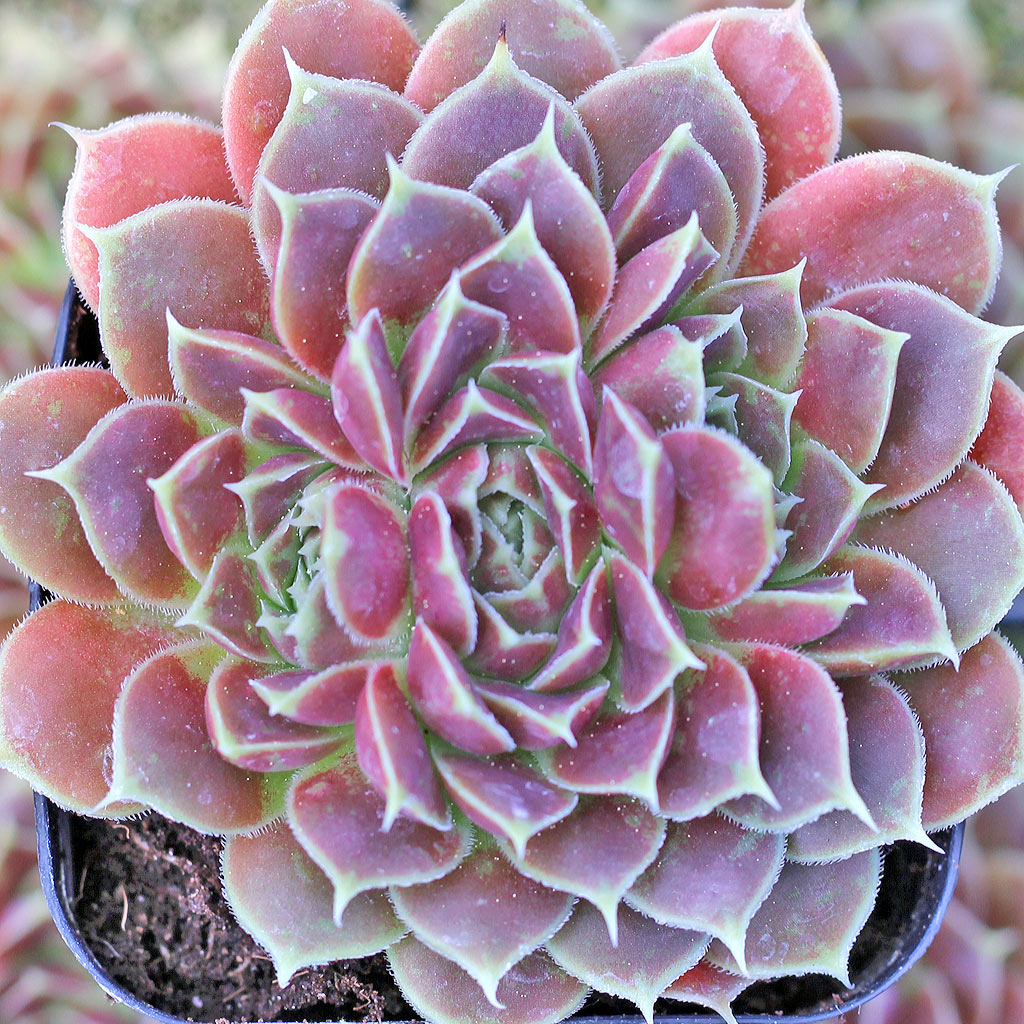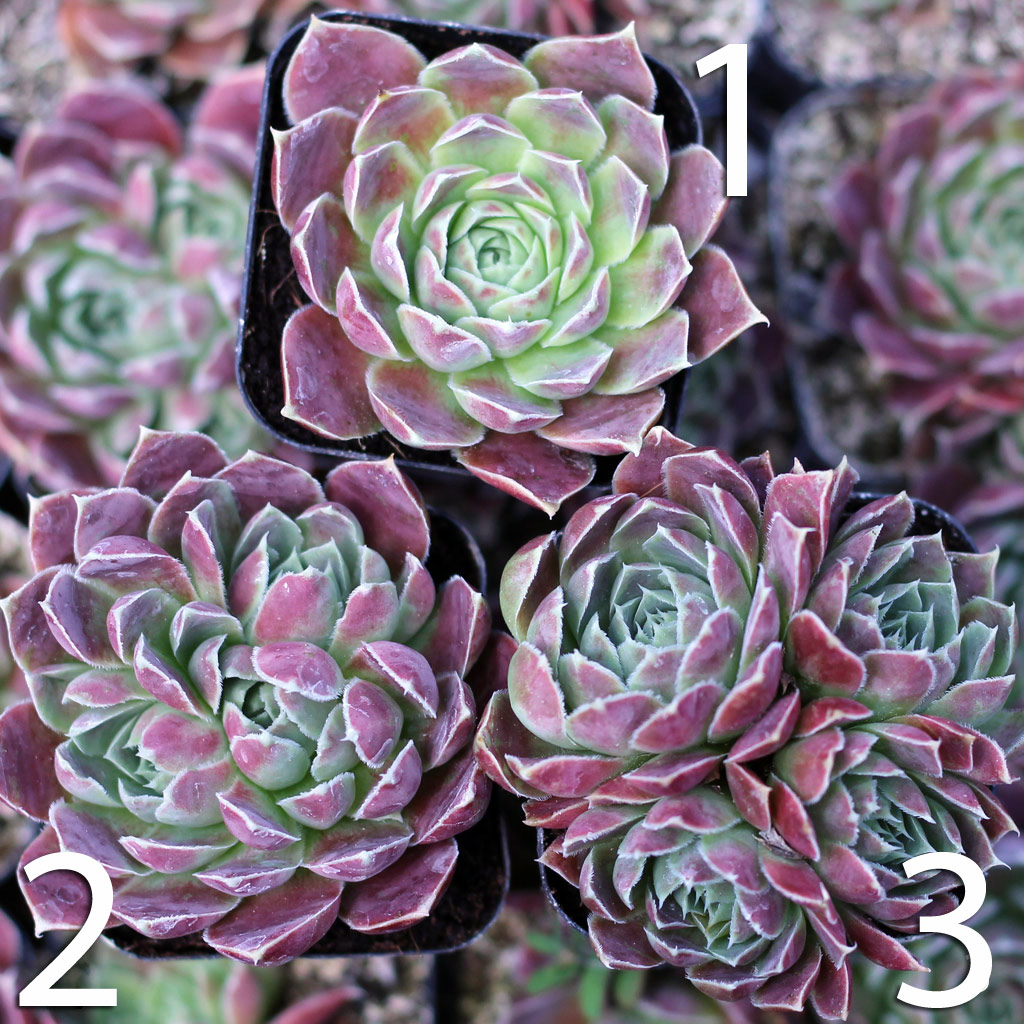Heuffelii
Propagating Sempervivum Heuffelii

Sempervivum heuffelii is an up-and-coming group of cold hardy succulents, prized in outdoor plantings for year-round colors, low maintenance needs, and architectural form. Here, we'll take a look at the unique way these plants reproduce and how it can transform your garden with mesmerizing patterns.
Crown Division
While the standard Sempervivum (Hens and Chicks) are known for sending out young plant offsets on stolons from a central mother rosette, new growth in S. heuffelii arises through crown division. The S. heuffelii varieties develop offsets right in the middle of an older rosette. As leaves emerge and enlarge, the clump expands to make room for the new, individual rosettes. This transition is apparent in the following photo of S. heuffelii ‘Chocoleto’ as it changes from:
- a single mother plant, to
- a dividing cluster, and finally to
- a clump of four distinct rosettes.
Propagating By Hand
Without any effort on your part, the heuffelii will propagate and expand to form a neat colony. You can also take a hands-on approach though, and manually divide the crowns with a sharp, clean knife. This gives you more control over the size and location of your colonies. When you cut a rosette into pieces, be sure that each portion has a bit of root tissue attached. Re-plant these sections and watch as they regenerate into full clusters.
Benefits
The process of crown division leads to the formation of exquisite mounds in outdoor containers and landscaping, and it has several advantages for the succulent gardener:
- Colonies grow ever outward in a tidy, gap-free clump
- No pruning or propagation work required
- To start colonies elsewhere, it's simple to cut a cluster apart and transplant the pieces
- When a rosette blooms and dies, the remaining offsets live on and fill the vacated space
 Explore our wide selection of hardy Sempervivum heuffelii to find the perfect shapes and colors for your garden palette.
Explore our wide selection of hardy Sempervivum heuffelii to find the perfect shapes and colors for your garden palette.



